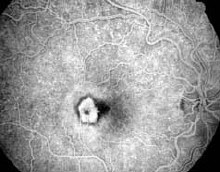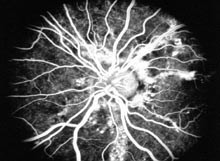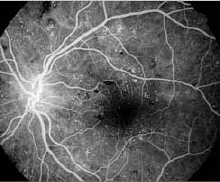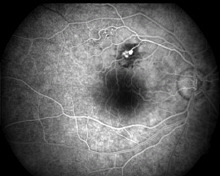In response to considerable discussion the Examinations Committee
of the College has decided to update the format of the Part 3 MRCOphth
Examination from April, 2003.
An extended matching paper will replace the existing MCQs and
they will be no negative marking. The test will probably be easier than
the previous format. To familiarize the candidates with the new formats,
test 34 and onward will follow the new style as described below by the
College.
40 questions over a 3-hour period.
The questions will be divided as follows.
-
5 pathology questions
-
5 microbiology questions
-
15 general ophthalmology questions
-
15 Medicine and Neurology in relation to ophthalmology
Extended matching questions are multiple choice items organized into sets
that use one list of items in the set. The extended matching set includes
four components
1. a theme
2. an option list
3. a lead in statement
4. at least four item stems, as illustrated below
This will involve 40 questions (probably 200 stems) over a period of 3
hours. |
1. Match the fluorescein angiographies (a-d ) with the most
likely options (A-N) listed below:
A. background diabetic retinopathy
with
significant macular oedema
B. background diabetic retinopathy with
microaneurysms
C. proliferative diabetic retinopathy
D. proliferative diabetic retinopathy with
vitreous haemorrhage
E. angioid streaks
F. sickle cell retinopathy
G. subfoveal choroidal neovascularization
in age-related macular degeneration |
H. juxtafoveal choroidal neovascularization
in age-related macular degeneration
I. extrafoveal choroidal neovascularization
in age-related macular degeneration
J. central serous retinopathy
K. macroaneurysms
L. post-operative cystoid macular oedema
M. branch retinal vein occlusion
N. central retinal vein occlusion |
2. Match the following findings (a-d) with the studies (A-L) listed
below.
A. DCCT
B. BVOS
C. CVOS
D. UKPDS
E. MPS
F. TAP |
G. ETDRS
H. DRVS
I. AERDS
J. OHTS
K. DRS
L. EVS |
| a. |
This study showed that focal argon laser photocoagulation reduced
visual loss in
patients with macular oedema due to branch retinal vein occlusion and
a vision
of 6/12 (20/40) or worse .
|
| b. |
This study showed there was no difference
in outcome between immediate
vitrectomy and intraocular antibiotics alone if the initial vision
was hand motions
or better.
|
| c. |
This study showed that an intake of vitamin
C and E, carotene and zinc protect the
progression of moderate age-related macular degeneration to advanced
macular
degeneration.
|
| d. |
This study showed that the treatment of
predominantly classic CNVMs in wet
age-related macular degeneration with photodynamic therapy (PDT) reduced
the risk
of losing three or more lines of vision.
|
|



